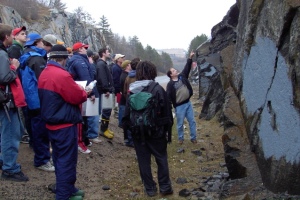 The Canadian mining industry is growing, mainly due to the expansion of the global economy. This global expansion, however, is placing increased pressure on mining companies to recruit workers from around the world.
The Canadian mining industry is growing, mainly due to the expansion of the global economy. This global expansion, however, is placing increased pressure on mining companies to recruit workers from around the world.
The 2005 report of the Mining Industry Training and Adjustment Council (MITAC) identified the need for over 80,000 workers in the mining industry over the next 20 years. That number has now risen to 92,000.
The industry doesn’t operate in a human resources vacuum. Foreign mining companies are aggressively recruiting Canadian workers at a much greater rate than the global recruitment activity of Canadian companies. And in addition there are skills shortages throughout Canada not just in mining, but also in petroleum, electricity, construction, etc.
A recent report from the Conference Board of Canada concludes that Ontario’s labour market pressures will intensify after 2010. The problem will leave Ontario with a shortfall of more than 360,000 skilled people by 2025.
The success of Canadian mining depends on the availability of a well trained, skilled work force. In reality the number of people enrolling in mining-related post-secondary programs is below the industry demand. Young people still have a limited awareness and many misconceptions about the modern mining industry and the career opportunities it offers.
The public continues to think of mining as a dirty, difficult job involving low tech tools. Competition from industries like oil and gas, electricity, utitilities and construction is another big concern as they are competing for some of the same professionals (i.e., engineers and tradespeople).
The solutions to the labour shortage challenge must be innovative, multifaceted and collaborative. The Industry is collaborating with the public elementary and secondary education sector to increase youth awareness of the high-tech skilled career opportunities offered in mining.
Companies are partnering with post-secondary institutions to develop innovative delivery models and support equipment needs and student placements in much greater numbers, thereby enabling the institutions to educate and train larger numbers of students annually. These strategies are resulting in significant increases in the number of students entering skilled trades, technician and technologist programs.
The mining industry is beginning to pay more attention to the training needs of both current workers and possible future workers. Existing employees are being given access to training and development opportunities. Mentorships are becoming more apparent, where a younger worker is partnered with an ageing, soon to retire worker to facilitate the passing on of learning and practices that have accrued over the career of the older worker.
Many workers in declining industries are now being targeted as a potential source of new recruits for the mining industry. Forestry workers have the basic skills that are easily transferable to mining and many forestry-related operations and mines are located in the same regions. Mining companies are partnering with government programs and training institutions to assist workers to retrain for rapid reemployment in the mining industry.
Mining activity in Ontario is increasing rapidly in the traditional aboriginal lands. Companies are working more collaboratively with local First Nations communities and post secondary institutions to support programs that will encourage aboriginal youth to prepare for a career in mining. continued…..
Part two of Educating the Next Generation for the Mining Sector will be posted tomorrow.
Sylvia Barnard is President of Cambrian College, located in Sudbury, Canada.
Visit her blog at: http://www.cambriancollege.ca/wordpress/























